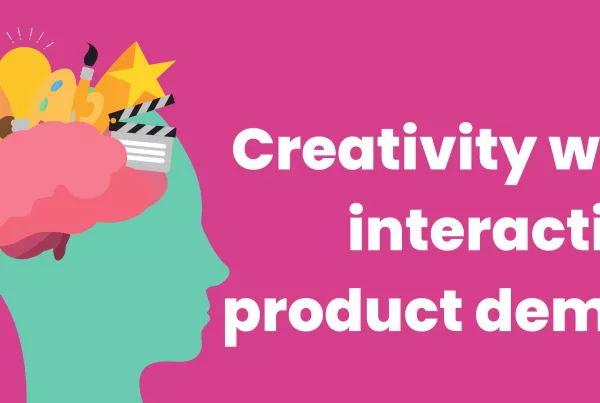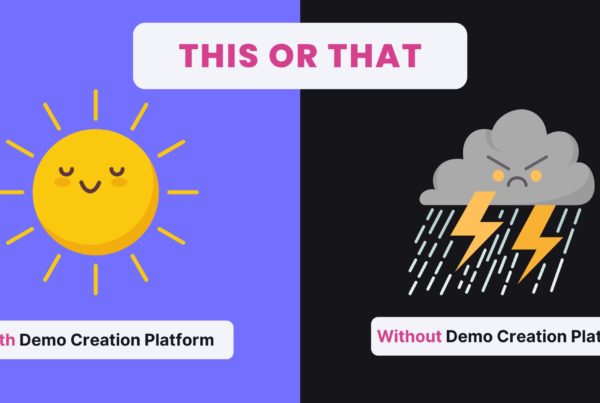Alexa Grabell, CEO of Pocus, hosts PLS AMAs with product-led sales experts to share best practices, frameworks, and insights on this emerging category. These AMAs are an opportunity to ask PLS leaders any question – ranging from hiring to sales compensation to tech stack – in a low-key, casual environment. This is a members-only event for the PLS community, but you can request an invite here.
In the latest installment, Alexa invited David Apple, Chief Revenue Officer at Zingtree and former Head of Sales and Customer Success at Notion and VP of Customer Success & Sales at Typeform.
Needless to say, he has a lot of valuable insights to share about product-led sales and customer success in the SaaS world. Here are my favorite takeaways from the conversation.
Where to Focus Your Energy
Now that he’s at Zingtree, David is bringing a kind of focus that he learned he needed at Typeform. He would get inspired by all the great SaaS and sales resources available, bring them back to his team, and try to do everything at once. That made everyone get spread too thin and so they failed to move the needle on the most important things.
Now he knows the importance of focusing on a few things at a time, and being deliberate about saying no to things as well. For example, when he joined Notion he was asked to run enterprise sales and grow the sales team at the same time, which are both great goals. But he couldn’t do both effectively, so he told the team he’d prioritize enterprise sales. Your goal might be increasing the volume of sales, growing enterprise customers, etc – you can look at the companies ahead of you to get inspired, but remember to stay focused.
Getting Sales and CS to Work Together
There’s a lot of competing opportunities for sales and CS teams – so how do you create a system where they’re incentivized to work together instead of competing? At Notion, David decided to track how many expansion opportunities were sent to sales and see how many of those AEs closed, and they can see the results of collaboration and everybody is (fairly) happy.
As you get larger, AEs can focus too much on expansion and not enough on new business so you might need to dedicate CS only on expansion, and have sales focus on getting new logos. There’s no one solution but it depends on your business and size.
Best Sources of Leads
David had three main sources of leads when he was in sales at Notion and Typeform. His best source was the contact sales button on the pricing page – it had the best conversion rate and brought in the biggest leads. The second was escalations from support – he created a guide for the support team to determine which kinds of conversations to escalate to him, and which ones to solve themselves.
Finally, he had PQL opportunities where he would look at big accounts and find opportunities to upsell and consolidate. At Notion, he had customers paying as little as $.50 per seat, so it was easy to go in and pitch options to them to test pricing. Doing this, he could find out what the obstacles were to them paying more, and where they saw the value.
Why People Still Talk to Sales
In PLG companies, why does anyone actually choose to talk to sales? David found a lot of different scenarios where this would happen, even though many buyers are happy to self-serve. Sometimes a user would test the product out, put down their credit card, and start paying – and then their IT would hear about it and want a demo.
Ultimately, large enterprises cannot and will not buy with just a self-serve motion where they put down a credit card. They need a contract, a discount based on headcount, IT integration, etc. If you try to get those enterprises to a completely self-service model, David says, it’s just not going to work and your growth will be limited as a result.
But to scale effectively, eventually your organization will probably need to limit who talks to sales and how much – same with customer success. Sales will need to only proactively engage with the accounts that need it, and avoid spending too much time on the smaller accounts. However, how small is too small depends heavily on your organization, so do the research to find out where that barrier lies for your business.
Acquisition costs are obviously much lower with a self-serve model, so looking at how effective acquisition remains important. Creating a great self-service experience for everyone under that touch threshold and holding those boundaries firm for his team is what he has found is effective.
That also works for customer success because they want to but can’t go above and beyond for everyone, so as a leader you need to create boundaries around where to engage to maximize efficiency. Set them as you grow as well – when your company is a startup or very small, you don’t need them as much, but it’s not scalable to keep operating like that as you grow.
His Controversial Commissions Opinion
David doesn’t think commissions are a good thing for anyone (controversial opinion alert!), because they do not incentivize the right behaviors for sales or customer success and there’s been a lot of research about this. At Typeform, he got away with not having commissions and would ideally never have them.
Growth and Expansion
When working at a startup, David found it could be difficult to convince the founders to explore a path to growth they hadn’t envisioned from the beginning because they get attached, which can get everyone stuck for a bit. At Notion, the challenge was convincing leadership that CS should spend its time helping customers to use it effectively and get the maximum value out of it and that revenue would follow on its own – but he and his team were the ones speaking with customers and knew what was happening on the ground.
A lot of what determines how complex an expansion is how good the original deal was – if everything is clear, then CS can handle it easily because the terms have already been laid out and there’s not much to negotiate. If not, then you need to get an AE in there to negotiate things and that increases costs. At Zingtree, he’s currently trying to clear up forms and intake for new deals so expansion is simpler and doesn’t need an AE.
A Final PLG Motion Thought
Everybody thinks of product market fit, but you also need to think about market business model fit and channel fit (sales, self-service, outbound, marketing, etc). And a part of the equation is how realistic is it for someone to fully self-serve and get a ton of value out of the product without working with sales or customer success – a full PLG motion is not the ideal model for every business.
Thanks for the insights, David!
Read the original AMA recap from Pocus on their blog – the Pocus Post.
Photo by Jon Tyson on Unsplash






